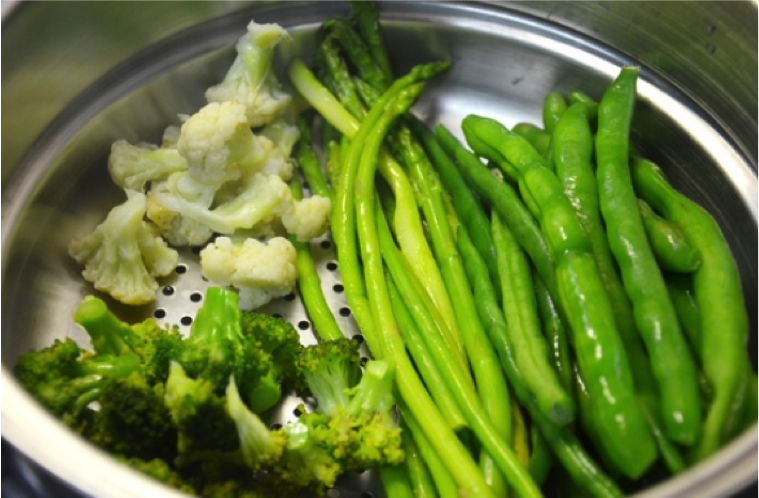Boiled or Steamed Greens
MAKES: 4 servings
TIME: 10 to 30 minutes
This is the basic method for cooking any greens (or, as you’ll see from the variation, just about any vegetable at all). Boiling gives you a little more control, but steaming is faster; both work just fine. Read The Basics of Cooking Vegetables for more detail, and see Pre-cooked Vegetables in Oil or Butter, for the best ways to make this simple preparation more elaborate.
A word about tender greens versus sturdy: If the leaves and stems are pliable and can be eaten raw as with spinach, arugula, or watercress it’s a tender green. If the stems are as crisp as celery and the leaves a little tough or rubbery as in bok choy, chard, kale, or collards it’s best to separate the leaves from the stems (see the illustration Preparing Leafy Greens with Thick Ribs) and give the stems a little head start.
Other vegetables you can use: any greens at all, except sorrel (which will dissolve).
Salt
1 to 2 pounds greens, like spinach, kale, or chard, washed and trimmed
Freshly squeezed lemon juice, extra virgin olive oil, butter, or any of the 13 Ways to Jazz Up Precooked Vegetables Shocking Vegetables
Prepare a steamer (see Steaming) or put a pot of water on to boil and salt it. If the greens have very thick stems (over 1/8 inch or so), separate them from the leaves.
Add the stems or the stems and leaves to the pot or the steaming vessel and cook until bright green and tender, from 3 minutes (for spinach) to 10 (for kale and collards). (If you held back the leaves, add them when the stems are just about tender.)
Drain, then serve, drizzled or topped with whatever you like. Or shock in ice or cold water Shocking Vegetables, drain again, and set aside.
Variations
Boiled or Steamed Tender Vegetables. The only differences are preparation and time; this will work for broccoli, cauliflower, green beans, asparagus, peas of any type, even eggplant (be careful not to overcook): Cook until the vegetable is just tender, which will vary from about 3 minutes (peas) to 7 (broccoli florets) to 10 or 12 (broccoli stems, some green beans) and up to 25 (for a large whole head of cauliflower). Proceed from Step 3.
Boiled or Steamed Root Vegetables or Tubers. Not quite so simple; in many ways it’s best to follow individual recipes given in this chapter, especially for potatoes and sweet potatoes. But as a general rule, this will work; use for beets, turnips, radishes, winter squash, and so on: Peel the vegetable or not, as you prefer; leave whole if possible to prevent waterlogging. Cook until the vegetable is quite tender and can be pierced easily with a thin-bladed knife, from 10 minutes (radishes, for example) to nearly an hour (larger potatoes). Proceed from Step 3.








